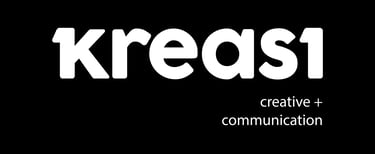Brand Positioning: The Art of Owning a Space in the Consumer
BRAND STRATEGY
KREASI
6/8/2024


Brand Positioning: The Art of Owning a Space in the Consumer's Mind
In the crowded marketplace, where countless brands vie for attention, brand positioning is the strategic compass that guides a company towards claiming a unique and valuable position in the minds of its target audience. It's not just about what you sell, but about how you are perceived, and how you differentiate yourself from the competition.
What is Brand Positioning?
Brand positioning is the process of establishing a distinct and desirable image for your brand in the minds of consumers. It's about creating a clear and compelling answer to the question, "Why should I choose your brand over others?"
A successful brand positioning strategy involves identifying and highlighting your brand's unique value proposition, its key differentiators, and the specific benefits it offers to your target audience. It's about crafting a narrative that resonates with your customers and makes them choose your brand over others.
Why is Brand Positioning Important?
Effective brand positioning is essential for several reasons:
Differentiation: It sets you apart from competitors and helps you avoid becoming a commodity.
Relevance: It ensures that your brand is perceived as relevant and valuable to your target audience.
Clarity: It provides a clear and concise message about what your brand stands for and what it offers.
Consistency: It helps you maintain a consistent brand image across all touchpoints.
Loyalty: It fosters customer loyalty by creating a strong emotional connection with your brand.
Crafting a Winning Brand Positioning Strategy
Developing a successful brand positioning strategy requires a deep understanding of your brand, your target audience, and the competitive landscape. Here are some key steps:
Define Your Target Audience: Clearly identify the specific group of consumers you want to reach. What are their needs, desires, and pain points?
Identify Your Unique Value Proposition: What unique benefits does your brand offer that your competitors don't? What makes you stand out?
Craft Your Brand Positioning Statement: This is a concise statement that summarizes your brand's unique value proposition and target audience.
Develop Your Brand Messaging: Create a consistent message that communicates your brand positioning across all marketing channels.
Monitor and Adapt: Continuously monitor your brand's performance and adapt your positioning strategy as needed to stay relevant and competitive.
Examples of Successful Brand Positioning
Some examples of brands with strong positioning include:
Apple: "Think Different" – positioned as innovative and premium.
Volvo: "Safety" – positioned as the safest car brand.
Nike: "Just Do It" – positioned as empowering and inspirational.
Tesla: "Accelerating the world's transition to sustainable energy" – positioned as a leader in electric vehicles and clean energy.
Your Brand's Position: A Strategic Asset
Brand positioning is not a one-time activity; it's an ongoing process that requires constant attention and refinement. It's a strategic asset that can drive significant business growth and create a lasting legacy for your brand. As a brand consultant, Kreasi can help you achieve a strong market position.
PT. Kreasi Untuk Nusantara
Kreasi is a multi-disciplinary brand consultant that focuses on helping design solutions for business growth through market research, brand strategies and branding Campaign.
Headquarters
contact@kreasi.agency
081234598942
© PT Kreasi Untuk Nusantara 2024.All rights reserved.
SCBD, One Pasific Place 15th floor Jl. Jendral Sudirman Kav 52-53, Jakarta, Indonesia.
Contact


